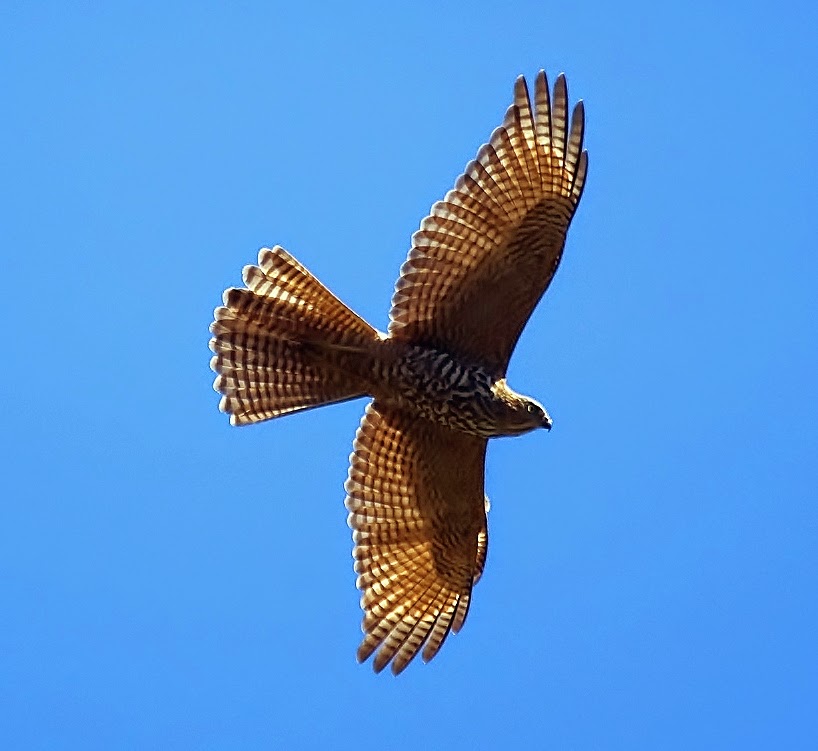 |
| Photo by David Cook (Flickr) |
Common name:
brown goshawk (en); açor-australiano (pt); autour australien (fr); azor australiano (es); bänderhabicht (de)
Taxonomy:
Order Falconiformes
Family Accipitridae
Range:
This species is found throughout Australia and New Guinea, in Vanuatu, New Caledonia, the southern Solomon islands, and in southern Indonesia.
Size:
These birds are 37-55 cm long and have a wingspan of 74-96 cm. Males weigh 250-415 g, while the much larger females weigh 440-740 g.
Habitat:
The brown goshawk is found in a wide range of habitats, including dry tropical forests, dry savannas, second growths, grasslands, rivers and streams, rural gardens and urban areas. They occurfrom sea level up to an altitude of 2.000 m.
Diet:
They feed on small mammals, particularly rabbits, and also birds, reptiles, amphibians, arthropods and, occasionally, carrion.
Breeding:
Brown goshawks breed in September-April. They nest in solitary pairs, each building a platform of sticks lined with green leaves. The nest is placed in a fork or horizontal branch of a tall tree, up to 36 m above the ground. There the female lays 2-4 bluish-white eggs, which the mostly incubates alone for 30-35 days. The chicks are fed by both parents, but the male is responsible for the bulk of the hunting during the fledging period. They fledge 28-37 days after hatching, but remain dependent on the parents for another 3 weeks.
Conservation:
IUCN status – LC (Least Concern)
This species has a very large breeding range and is described as common and widespread. The population is suspected to be in decline owing to persecution by pigeon fanciers and poultry farmers, and habitat destruction, although the species is able to tolerate a degree of habitat degradation.







